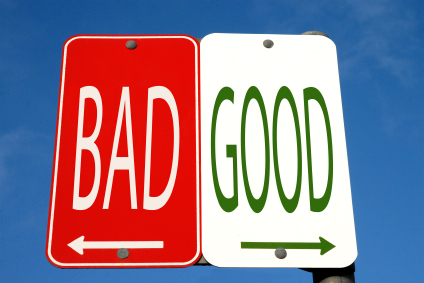
The concept of creating customer value has entered into the lexicon as a buzzword. I find that when a concept reaches the status of buzzword, few people really understand what it means and how to use it. That is unfortunate as the concept of understanding and creating customer value is a very useful tool.
To understand what it means to create customer value, we must understand how value is determined. Value can be defined as the perceived benefits compared with the perceived costs.
However, it is not as simple as that because value lies in a customer’s mind. What is value for me is not necessarily value for you. We all weigh up the perceived benefits of a purchase against the perceived costs differently.
What we accrue to the benefits of a product changes with our personality, our experiences and our environment.
Take a simple example of going to see a movie. You can try this test on your friends and colleagues yourself.
Let us imagine the standard cost is $15 to go and see a movie. Give a group of ten people the choices to see no movie, one movie, or more of the following movies:
- Sweeney Todd – a violent dark musical.
- Cloverfield – a Sci-Fi monster movie.
- Twenty Seven Dresses – a feel-good movie.
- The Waterhorse: Legend of the Deep – a child’s movie along the lines of ET.
The result will inevitably be split. It will split around categories such as gender, age, emotional state (need of a feel-good movie), the age of children in the family and whether people like movies or not.
The benefits of seeing each movie will be different for almost everyone.
Ask who would see one of their preferred movies if it was a walk away, but the seats were hard and it would be very crowded. Some hands will drop as the perceived benefit is no longer as strong.
What we perceive as a cost is also different from person to person.
Ask those who said they would go to see a particular movie for $15 if they would go if it was only showing at a theatre 40 minutes drive away. Some hands will drop. The distance and time factor to travel to the theatre is too much of an additional perceived cost.
Ask again who would buy each of these movies on DVD at, say, $30 each. This will get a mixed, hard to predict result. The benefits change. We can play the DVD over and over again. We can stop it when we want and there is no-one annoying sitting in front of us. However, we don’t get quite the big screen effects. The perceived costs change too. The sticker price doubles, but we don’t have to go anywhere and we will never be late or in a rush to get to the theatre.
Further, you might ask who would pay $200 to go to a big screen premiere with pre-show drinks and food included. The benefits change a lot and so does the sticker price.
An alternative is to ask who would download a poor quality, illegal pirate copy for $2. The range of hands going up will change again. The perceived benefit reduction of poor quality competes with perceived cost increase of tangling with our conscience over doing something illegal.
We can map value.
Research can determine the relative values of perceived costs and perceived benefits for a segment of customers. We can research perceptions of benefits and costs of different products, different brands of the same product or the same product and brand purchased through different channels. The combination we choose to research depends on what we want to do with the information on customer value.
A value map is best shown as a picture.
A value map picture plots relative perceived benefit, for example on a scale of 1 to 10, against relative perceived cost on a similar scale. The line drawn from (0,0) to (10,10) is known as the fair value line.
If we were comparing hotels in our analysis, a small country hotel which provided rudimentary services including clean sheets, towels and a comfortable bed but with a slightly noisy air conditioner, some traffic noise from trucks passing and no restaurant would rate low on a benefits scale that included a five star hotel.
In terms of perceived price, at say, $80 per night versus $300 per night for a five star Hotel, it is likely to also rate low on the perceived cost axis. Provided the benefits and value were equal, it would be on the fair value line.
The five star Hotel (Hotel A) would need to offer substantial benefits over the country hotel to remain on the fair value line. Imagine the five star hotel had all the facilities, the views, great chefs, great produce and surly staff. In most people’s mind the surly staff would degrade the other benefits substantially. Probably enough to take the hotel off the fair value line.
If they were the only competition around then they could probably maintain a high price. However, if a competitor of similar stature with friendly, helpful, efficient staff (Hotel B) was in their catchment area, the price would have to drop to bring them back to the fair value line or risk losing market share.
Alternatively, Hotel B could increase its price with no appreciable decline in market share. The nature of the research to build a value map is relatively simple. It must contain three categories of questions:
- Demographics to partially group like-customers.
- Questions about what the importance to customers is of different elements of perceived benefits and costs, preferably with a relative ranking and a forced ranking.
- Questions about how well we do versus competitors for each element of perceived benefits and costs.
A customer value map and the data which lie behind it can reveal more than just whether we are creating value for our preferred segments relative to our competitors.
A customer value map showing competitors at the high end and the low end of the fair value line may indicate a zone of benefits and costs where there are unmet needs.
Your customer research tells you what customers want but also what they perceive as the costs including price.
A customer value map can be used for non-commercial operations as well as commercial operations as perceived cost is not only the price.
Creating customer value is not a buzzword. It requires work. It requires an understanding about what is important to customers and how to deliver those benefits and at an acceptable perceived cost relative to your competitors.









